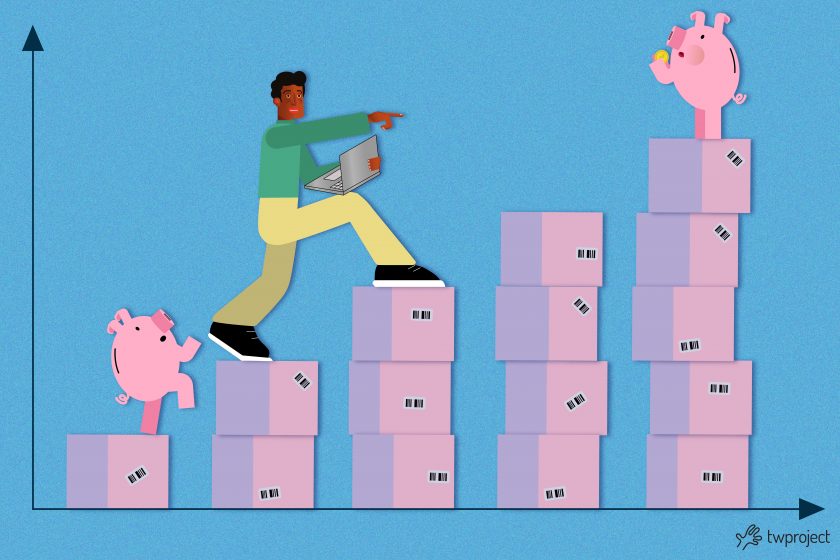-
Strategies for optimizing project production factor
In view of the increasingly competitive nature of most modern industries, business leaders committed to optimizing the production factor often regard it as a priority. Success, in this case, requires overcoming multiple challenges: having a competent team, setting clear objectives, establishing timelines, and, most importantly, ensuring effective project performance. Improving project performance is a dynamic … Continue reading "Strategies for optimizing project production factor"
-
Measuring project efficiency with productivity indexes
A core element of project management is assessing and measuring a project’s success using the correct productivity indexes. Organizations in all sectors constantly seek to achieve their strategic goals and provide added value to their stakeholders. Yet, determining whether a project has achieved its expected objectives and goals requires a structured approach and robust evaluation … Continue reading "Measuring project efficiency with productivity indexes"
-
Scrum with Twproject for SEO & Digital Marketing
We recently read a very interesting post about how to use Scrum methodology in a SEO & Digital Marketing Team. The post has been written by Marcus Miller (@marcusbowlerhat) and you can read it here: Using agile project management for SEO & digital marketing This post gives me the idea to write a new one … Continue reading "Scrum with Twproject for SEO & Digital Marketing"
-
Supply chain management with Twproject
Supply chain management involves supervising the entire production flow of goods or services, from the raw components to the end product delivery to consumers. It comprises a range of cross-functional tasks connecting goods and services with customers. CONTENT Steps in planning and managing a supply chain The project supply chain manager’s role Supply chain … Continue reading "Supply chain management with Twproject"
-
How to choose a project management software
What are the main reasons to choose a good project management software, and how to do that? Let us look at this topic in detail. Using a project management software is a versatile way to simplify the process of managing any project. It helps to unify the work process on one or more projects. This … Continue reading "How to choose a project management software"
-
Project Management Basics: 4 Reasons to Use Gantt Charts
What is a Gantt Chart? Why it can be useful to manage your project? If you have never heard of it, it’s important to know that Gantt diagram is a very versatile tool to visualize and track the timing and progress of a task. CONTENT What is the purpose of the Gantt chart? 4 reasons … Continue reading "Project Management Basics: 4 Reasons to Use Gantt Charts"
-
Critical Path in Project Management – How to
The Critical Path Method (CPM) is an essential algorithm in project management, used to plan a set of project activities. Its purpose is to highlight the steps involved in the longest path that determines the project end date. CONTENT How to implement the Critical Path Method Critical Path Method: a practical example Critical Path Method: … Continue reading "Critical Path in Project Management – How to"
-
Reviewing an issue in the production process
Issues in the production process in the modern industrial world are common and can harm a company’s efficiency and profitability. These problems range from minor hiccups to severe failures that can undermine the entire production line. Reviewing these problems is not only a core part of project managers working in industrial manufacturing but can be … Continue reading "Reviewing an issue in the production process"
-
Optimize your company to-do list with Twproject
Organizing your to-do list can be challenging for a project manager, especially in large business environments. Every day, project managers have to tackle countless tasks that need to be accomplished. But how do they manage to accomplish all that needs to be done? The answer may be simpler than you think: create a”to do list.” … Continue reading "Optimize your company to-do list with Twproject"
-
Inclusivity and project management: core values
Inclusivity and project management are ever-evolving domains. Human resource management plays a significant role in project success. Inclusivity is critical in efficiently leading a team and achieving its goals in an ever more interconnected global environment. In this article, we cover the importance of inclusivity in project management by analyzing the core values that underlie … Continue reading "Inclusivity and project management: core values"
-
How to calculate work hours in a project
CONTENT Time Tracking: 5 reasons why it is crucial in project management 1. Track and estimate work time 2. Helps bill suppliers correctly 3. Helps better manage project teams 4. Helps create a work record How to track hours worked Pen and paper Digital clock Time tracking software Calculate hours worked on a project: choose … Continue reading "How to calculate work hours in a project"
-
7 tips to boost work productivity
CONTENT 7 tips to increase work productivity 1. Focus on one activity at a timet 2. Take regular breaks 3. Focus on the most important tasks first 4. Set small goals 5. Delegate some tasks 6. Boost work productivity: use the tomato technique 7. No meetings Boosting your team’s work productivity is no impossible feat, … Continue reading "7 tips to boost work productivity"
-
Boosting team productivity: 7 tips to consider
Managing and boosting team productivity isn’t an easy task. On one side, you want to maintain healthy motivational levels within the team, but on the other side, you still need to work hard towards organizational goals. CONTENT Boosting team productivity: Be realistic about your timeline Boosting team productivity: Evaluate processes Boosting team productivity: Refrain from … Continue reading "Boosting team productivity: 7 tips to consider"
-
21st century project management and increased productivity
Project management is a long-standing profession and in the past century it has become a real subject covered by many studies and research. CONTENT Project management transformation in the 21st century Project manager’s role According to classic project management, and too often used nowadays, the success of a project is measured in terms of time, … Continue reading "21st century project management and increased productivity"
-
Project priorities: 5 elements to know in order to define them correctly
The definition of priorities is one of project managers’ main tasks and is an area where there’s always uncertainty. The need to set priorities comes from the fact that you don’t have enough resources to work on everything you want for the time you want. CONTENTS Why give priority to projects? Overview of the techniques for … Continue reading "Project priorities: 5 elements to know in order to define them correctly"
Productivity
Choose the category you are interested in:
AgileComparisonCost managementPm expertProduct updatesProductivityProject managementResource managementTime managementUsage tips















